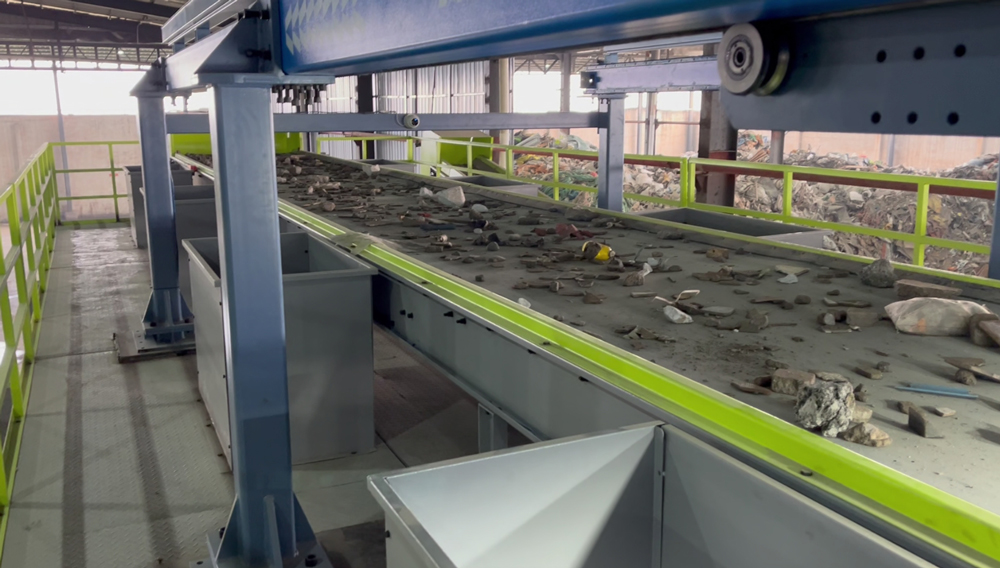 Time:2025-05-16
Time:2025-05-16
 Source:青绿环境
Source:青绿环境
The sorting of mixed construction and renovation waste involves various types of waste, including metals, wood, plastics, and concrete blocks. To effectively process these materials and maximize their recycling potential, a series of specially designed equipment is required to complete the entire process from receiving, preliminary screening to fine sorting and final treatment. The following are the main types of equipment that may be used in the sorting process of mixed construction and renovation waste:

1. Pre-treatment Equipment
- Feeding System: Typically composed of loaders or conveyors, it is used to transport renovation waste into the processing line.
- Crusher: Designed to break down large pieces of hard materials such as concrete and bricks into more manageable sizes for subsequent processing.
- Vibrating Screen: Utilizes screens with different mesh sizes to remove oversized or undersized particles, such as sand, gravel, and dust.
2. Preliminary Screening and Separation Equipment
- Magnetic Separator: Uses a strong magnetic field to attract ferrous materials, separating them from other waste for recycling of steel and other magnetic metals.
- Eddy Current Separator: Suitable for the separation of non-ferrous metals (such as aluminum and copper), it operates on the principle of electromagnetic induction and can efficiently extract non-ferrous metals from mixed waste.
- Air Classifier: Separates lightweight materials (such as plastic films and paper) from heavier materials based on differences in density using air currents.
3. Fine Sorting Equipment
- Optical Sorter: Uses high-resolution cameras and image processing software to identify objects of specific colors or shapes, and separates them using compressed air jets. It is mainly used for the precise sorting of materials such as plastics and glass.
- Near-Infrared Spectrometer (NIR): Capable of identifying the specific types of different plastics, which is crucial for increasing the recycling rate of plastics.
- X-ray Sorter: Scans and analyzes the internal structure of materials to detect heavy metals or other special components hidden in the waste mixture. It is particularly suitable for sorting complex waste compositions.
4. Environmental Protection Equipment
- Dust Collection System: Installed at key locations throughout the production line to capture dust generated during processing and protect air quality.
- Wastewater Treatment Facility: If a water-washing process is involved, a corresponding wastewater treatment device is required to ensure that the discharged water meets the required standards.
- Noise Control Measures: Techniques such as soundproofing enclosures and vibration dampers are used to reduce noise pollution generated by equipment operation.
5. Regenerated Product Manufacturing Equipment
- Recycled Aggregate Production Line: Processes treated concrete and bricks into recycled aggregate, which can be used in road construction and other fields.
- Biomass Fuel Production Equipment: Untainted wood waste can be ground into biomass fuel through a shredding mechanism, serving as a renewable energy source.
By properly configuring the above equipment, an efficient system for sorting mixed construction and renovation waste can be established. This not only helps to improve the recycling rate of resources but also significantly reduces environmental impact, promoting the achievement of sustainable development goals.













 Prev
Prev











